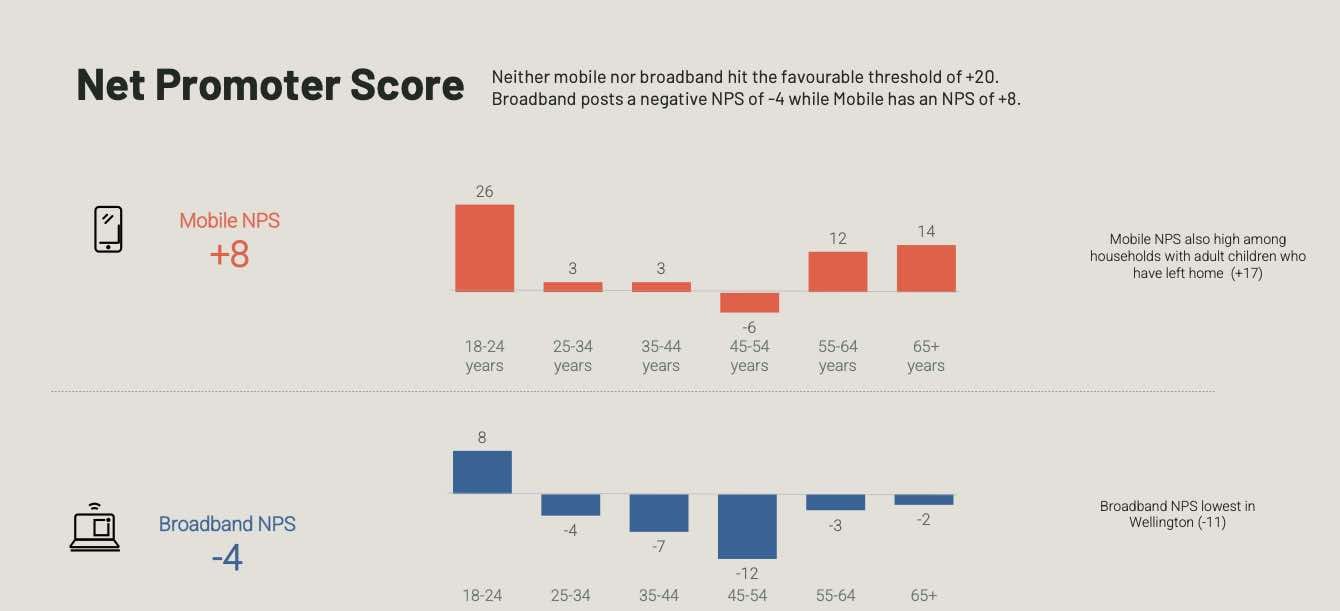Regulator targets mobile coverage maps, no hassle plan exits

Better coverage comparison data within a year
The Commerce Commission wants mobile operators to make their mobile coverage maps easier to compare. At the same time it wants customers to be able to exit plans without penalty if the coverage at the places most important to them is not up to scratch.
Regulators have given carriers a year to standardise their coverage maps. They must provide regular progress reports along the way. The new rules mean they have six months to put changes in place so that customers have full exit rights if they buy a plan and find the coverage is inadequate.
For years New Zealand’s mobile carriers have boasted that their networks’ offer close to 100 percent coverage of places where people live, work and play. For both 2degrees and One New Zealand the claim is 98.5 percent.
Coverage gaps
While this is arguably correct, many mobile phone users still frequently find themselves outside of coverage even in urban areas. It’s not unusual for homes to have less than complete coverage, with people needing to move to another room or even outside in order to make a call.
This is not often accurately reflected in the coverage maps shown on the carriers websites. And while each carrier already offers coverage maps, they are inconsistent across different carriers.
The Commerce Commission says consumers run into problems using coverage maps: “They are not reliable at highlighting coverage and performance at locations that matter to them.”
Telecommunications Commissioner, Tristan Gilbertson, says: “Too many Kiwis are signing up to find that they're not getting the coverage they expected”.
One year to act
A new set of rules drawn up by the Commerce Commission mean that carriers have one year to standardise the key components of their coverage maps to make them more comparable. At the same time, they will need to make the coverage maps and related information easier to find on their websites.
Alongside these changes, the Commerce Commission wants carriers to offer customers clear and straightforward exit rights when there is a difference between what is shown on a coverage map and their real-life experience.
Gilbertson says: “One NZ and 2degrees already offer this in the form of a ‘network guarantee’ for their new customers and we’d like to see this offered across the board by all providers. That will enable consumers to choose and switch more confidently, knowing they can leave without cost if the promised coverage isn’t there.”
Broadband customers can’t get no satisfaction

Mobile customers are satisfied with the service they get, but broadband satisfaction remains stubbornly below the Commerce Commission’s benchmark.
The Commerce Commission’s latest Telecommunications Consumer Satisfaction Monitoring Report found that 83 percent of New Zealand mobile customers are satisfied with their service. The report says mobile satisfaction levels are consistent across regions, gender and ‘household situation’.
Broadband satisfaction is lower, with only 76 percent saying they are satisfied. This falls below the 80 percent benchmark set by the Commerce Commission. Satisfaction is at its lowest in the Canterbury region and highest in households where children have left home.
Net Promoter Scores
The report says mobile and broadband fell well short of the ‘favourable threshold’ when Net Promoter Scores were measured. Broadband has a negative NPS of -4 while mobile sits on +8. To put these numbers in perspective, the NPS score for ‘world class’ is +80.
NPS is a measure of how likely a customer is to recommend something. A negative score, in effect, means consumers are warning others to stay away.
When it comes to individual company performance, Spark’s low-cost, low-touch Skinny brand topped the report’s NPS tables in both the broadband and mobile categories.
Skinny tops the tables
Skinny was the only broadband service provider with a positive NPS, it led the pack by a wide margin with a score of +18. The next best was Contact Energy with a score of 0. Slingshot took the wooden spoon with a score of -10, that’s 28 points behind Skinny.
The spread was almost as wide for the mobile NPS rankings. Once again, Skinny came out top, this time with a score of 27. In second place was 2degrees with a score of 19. One New Zealand was bottom of the table with a score of -5.
Spark’s cut price brand also topped the satisfaction rankings for broadband, tying for first place with Contact Energy. It was runner up for mobile satisfaction on 87 percent, one point behind 2degrees on 88 percent. Spark was in third place with 81 percent, while One NZ trailed on 77 percent.
TCF says report shows customers ‘overwhelmingly satisfied’
A statement from the Telecommunications Forum, an organisation representing the telco companies, took a glass half full view of the report.
It says: “The latest Commerce Commission Customer Satisfaction tracking report shows customers of both mobile and broadband services are overwhelmingly satisfied with their providers.”
This contrasts with, but does not contradict, the Commerce Commission’s reading of its survey: “... almost 20 percent of residential consumers and 30 percent of SME consumers are not satisfied with their mobile coverage.”
Baird steps down at One New Zealand
Tony Baird is moving on from his role as One New Zealand’s chief technology officer after 14 years in the job. His replacement is general manager strategy and transformation, Kieran Byrne. Byrne is also a director of the Rural Connectivity Group, a joint venture between One NZ, Spark and 2degrees. Baird will stay with the company in an advisory role.
Meanwhile, Rob Selwyn is One’s new Māori engagement lead, Pou Hononga. In a media statement, One said the new role involves support commitments made within the company’s Te Tiriti o Waitangi policy.
Amazon’s Project Kuiper satellite network reveals NZ plans

Amazon’s Project Kuiper, which promises a low earth orbit satellite broadband network similar to SpaceX’s Starlink is gearing up to service New Zealand customers.
Last week, the company registered the Amazon Kuiper New Zealand Limited name at the Companies Office.
Amazon has held its Project Kuiper cards close to its chest until now. Yet it recently announced plans to launch its network in five waves. The first will include 578 satellites in two coverage bands. One of these will cover parts of New Zealand.
OIO consent
In July, the Overseas Investment Office granted consent for Amazon to lease around 500 square metres of land at an undisclosed location for up to 20 years. That’s about the size of a small urban house site. Amazon “will install and operate telecommunications equipment on the land. The equipment will be used to provide broadband services to customers in New Zealand”.
The business has also purchased eight satellite transmission licences for New Zealand.
Amazon says Project Kuiper is “on track to begin delivering service to customers in 2025”.
When it arrives, Project Kuiper will inject some much needed competition into the LEO satellite market. Locally it will give all New Zealand telecommunications consumers another broadband provider to choose from.
Motorola Razr V3
t was once a big brand name, but Motorola has been invisible in New Zealand’s phone market in recent years. Now, the name is back with the Razr V3. The NZ$2000 flip phone with a large cover screen is on sale at electronics stores and through Spark. Motorola appears to be selling the phone more on its looks and as a fashion accessory than on its features.
In other news....
If your internet service is down in the Auckland suburbs of Mangere Bridge and Onehunga, here's why
Juha Saarinen covers this weeks fibre outage in Mangere Bridge, which he says may have been caused when children cut the cable.
Disinformation-fighting group Tohatoha disbands after losing funding
The NZ Herald’s Chris Keall writes about InternetNZ pulling the plug on Tohatoha.
“Tohatoha, a group that countered misinformation on the internet, has disbanded after losing support from its main financial backer, InternetNZ, and finding no alternative avenue for funding.”
Bluesky continues to soar, adding 2M more new users in a matter of days
TechCrunch reporter Sarah Perez on the rise and rise of the Twitter alternative social media site:
Social networking startup Bluesky continues to benefit from X’s shutdown in Brazil, having now added more than 2 million new users over the past four days, up from just half a million as of Friday. This rapid growth led some users to encounter the occasional error that would state there were “Not Enough Resources” to handle requests, as Bluesky engineers scrambled to keep the servers stable under the influx of new sign-ups.
Cyber threats: SMEs don’t know where to start
There’s no byline on this RNZ story which reports on research from the National Cyber Security Centre:
“...the Cyber Security Behaviour Tracker - found 36 percent of small and medium businesses (SMEs) experienced at least one cyber attack in the past six months.
Member discussion